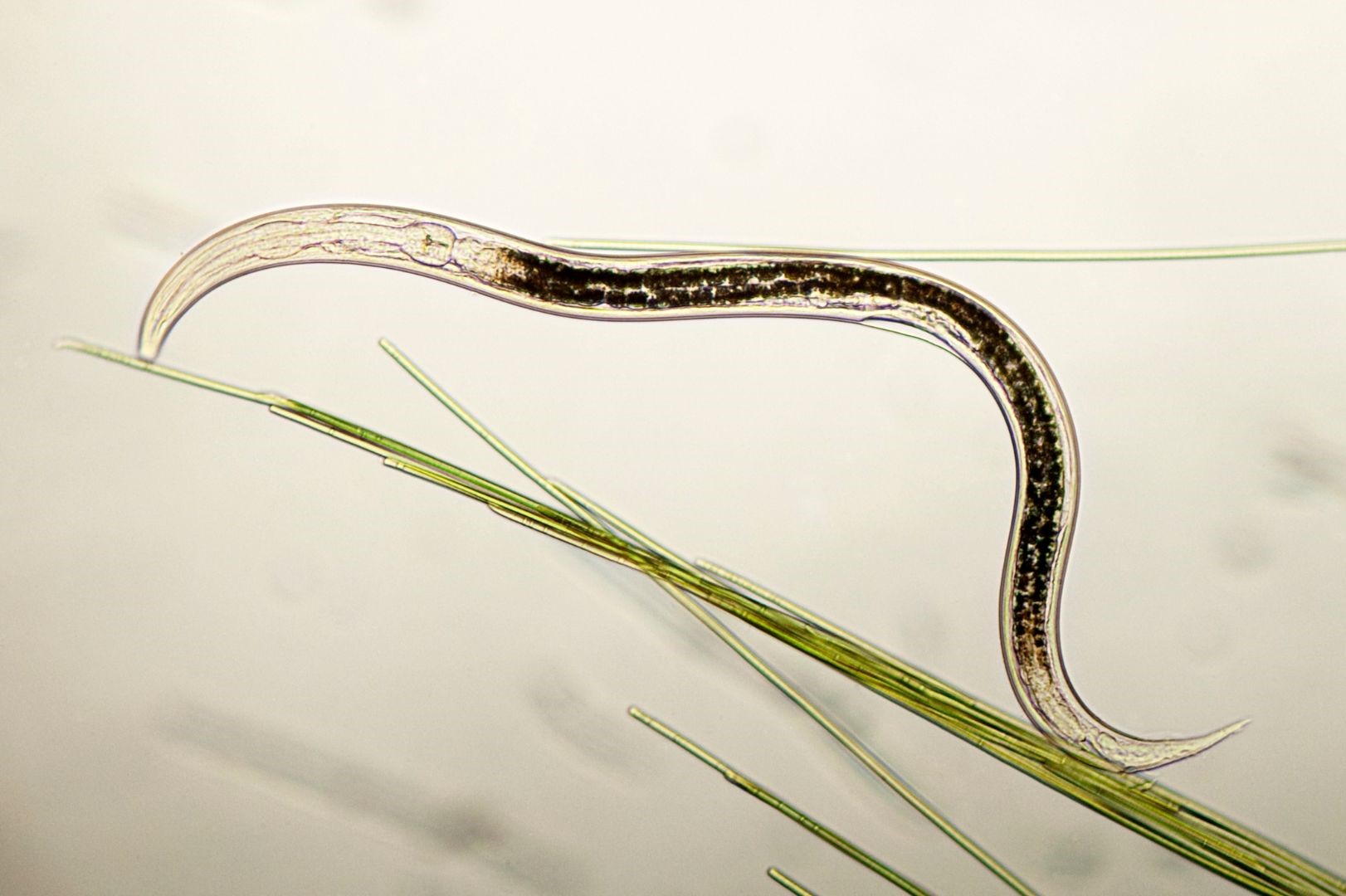Plant Parasitic Nematodes and Strategies for Crop Protection

This post is also available in:
This post is also available in:
![]() Ελληνικά (Greek)
Ελληνικά (Greek)
In the intricate dance of agriculture, a silent menace exists that often goes unnoticed, yet its impact on global crop production is profound. Plant pathogenic nematodes, microscopic worms in the soil, have emerged as significant adversaries to crops, causing substantial yield losses and economic burdens for farmers worldwide. This article will delve into the fascinating world of plant pathogenic nematodes, exploring their biology, the havoc they wreak on crops, methods for identification, and chemical and non-chemical strategies to manage these subterranean pests.
Understanding Plant Pathogenic Nematodes:
Plant pathogenic nematodes belong to the phylum Nematoda and are microscopic roundworms that inhabit the soil. While most are harmless, some species are parasitic, feeding on plant roots and causing nematode-induced diseases. The most notorious species among them include:
- Root-knot nematodes (Meloidogyne spp.).
- Cyst nematodes (Heterodera and Globodera spp.).
- Lesion nematodes (Pratylenchus spp.).
How Nematodes Damage Crops:
The modus operandi of plant pathogenic nematodes involves infiltrating plant roots, where they start feeding. Root-knot nematodes induce the formation of characteristic galls or knots on the roots, interfering with nutrient uptake and water transport. Cyst nematodes cause the roots to develop cysts, severely impacting the plant’s ability to absorb water and nutrients. Lesion nematodes, on the other hand, create lesions on the root surface, leaving plants susceptible to secondary infections.
The damage inflicted by these nematodes goes beyond mere physical harm. Nematode-induced diseases often lead to stunted growth, wilting, and a decline in overall plant health, ultimately translating into reduced yields and compromised crop quality.
Methods of Identifying Plant Pathogenic Nematodes:
Detecting the presence of plant pathogenic nematodes is a critical step in managing their impact on crops. Several methods are employed for accurate identification of the nematodes in a field:
- Soil Sampling and Extraction: Collecting soil samples from affected areas and using various extraction techniques, such as Baermann funnels or centrifugal flotation, allows researchers and farmers to isolate nematodes for further analysis.
- Molecular Techniques: Polymerase Chain Reaction (PCR) and DNA sequencing have revolutionized nematode identification by enabling the precise identification of species based on genetic markers. These techniques offer rapid and accurate results, aiding in targeted management strategies.
- Symptomology: Observing above-ground symptoms, such as stunted growth, yellowing, and wilting, can provide early indications of nematode infestation. However, relying solely on symptoms may not pinpoint the specific nematode species involved.
Non-Chemical Management Strategies of Nematodes:
Addressing plant pathogenic nematodes through non-chemical means is gaining prominence due to concerns about environmental sustainability. These methods focus on enhancing soil health and promoting natural antagonists:
- Crop Rotation: Alternating crops with nematode-resistant varieties can disrupt the nematode life cycle, reducing their population in the soil. This practice is especially effective against root-knot nematodes.
- Cover Crops: Planting cover crops with biofumigant properties, such as mustard or marigold, helps release compounds that suppress nematode activity. This environmentally friendly approach contributes to soil health and fertility.
- Soil solarization: This is a widely used technique that helps control weeds and soil-born pathogens. The farmers can cover their fields with a transparent (or not) polyethylene film to help increase the temperature on the soil surface. The high temperature will reduce the nematode population. However, some nematode species are mobile (and not obligatory parasites) and can go to greater depths to escape these lethal temperatures).
- Biological Control: Introducing beneficial organisms, such as nematophagous fungi and predatory nematodes, can help keep plant pathogenic nematode populations in check. These natural enemies actively feed on nematodes, acting as a biological control measure.
- Resistant Varieties: Breeding and cultivating crop varieties with inherent resistance to specific nematode species is a sustainable approach to reducing nematode damage. This method minimizes the need for chemical interventions while promoting crop diversity.
Chemical Management Strategies for Nematodes:
While chemical interventions are often considered a last resort, they are crucial in managing severe nematode infestations. Some common chemical control methods include:
- Nematicides: Nematicides are specialized pesticides designed to target nematodes. They can be applied as soil treatments or seed coatings, providing effective control against various nematode species. However, the use of nematicides raises concerns about environmental impact and human health.
- Fumigation: Soil fumigation involves the application of volatile chemicals that kill nematodes and other soilborne pathogens. However, this method is controversial due to its potential environmental consequences, including soil degradation and harm to non-target organisms.
Conclusion:
Plant pathogenic nematodes pose a complex challenge to global agriculture, necessitating a multifaceted approach for effective management. Understanding the biology of these microscopic pests, employing advanced identification techniques, and implementing a combination of non-chemical and chemical strategies are essential components of a comprehensive nematode management plan. As we navigate the intricate web of agricultural sustainability, the quest for innovative solutions to mitigate nematode-induced crop losses continues, with a shared goal of securing our food supply for generations to come.
References
- https://extension.okstate.edu/fact-sheets/soil-solarization-for-control-of-soilborne-diseases.html
- Walia, R. K., & Bajaj, H. K. (2014). Textbook on Introductory Plant Nematology
- Little, E. L. (n.d.). Chemical nematicides for control of Plant-Parasitic nematodes in Georgia vegetable crops. UGA Cooperative Extension. https://extension.uga.edu/publications/detail.html?number=B1502&title=chemical-nematicides-for-control-of-plant-parasitic-nematodes-in-georgia-vegetable-crops
- ENY-058/NG047: Nematode Management in Organic Agriculture. (n.d.). Ask IFAS – Powered by EDIS. https://edis.ifas.ufl.edu/publication/NG047
- Nematodes: Alternative controls. (n.d.). https://attra.ncat.org/publication/nematodes-alternative-controls/
- Abd-Elgawad, M. M. M. (2021). Optimizing safe approaches to manage Plant-Parasitic nematodes. Plants, 10(9), 1911. https://doi.org/10.3390/plants10091911









































































